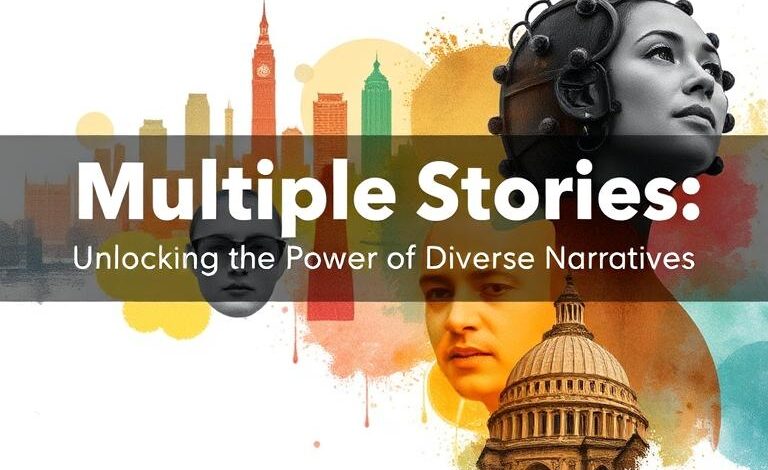Your Topics Multiple Stories: Unlocking the Power of Diverse Narratives

Why Multiple Stories Matter in Your Content Strategy
The Power of Diverse Perspectives
When you think about a single topic, it might seem straightforward—yet, beneath the surface lies a multitude of stories waiting to be uncovered. For example, if your topic is “sustainable living,” it can be approached from environmental, social, economic, and personal angles. Each perspective appeals to different audience segments and enriches the overall narrative.
Diverse stories allow you to connect with a broader audience. Some readers might be motivated by ecological concerns, while others are interested in financial savings or community impact. By presenting multiple stories about one overarching theme, you cater to these varied interests, making your content more inclusive and appealing.
Building Authority and Authenticity
Sharing multiple stories related to your core topics demonstrates depth and breadth of knowledge. It shows that you understand the nuances and complexities, which builds trust with your audience. When people see that you explore different facets—be it success stories, failures, case studies, or personal experiences—they perceive you as credible and authentic.
Furthermore, multiple stories can help you establish thought leadership. They position you not just as someone who talks about a single aspect but as an expert who comprehensively understands the topic. Over time, this layered storytelling builds a reputation that encourages followers to keep coming back for fresh insights.
Enhancing Engagement and SEO Performance
From an SEO perspective, multiple stories about your topics create more opportunities to rank for various keywords and long-tail phrases. Each story can target different search queries, increasing your visibility across search engines.
Engagement-wise, varied content keeps your audience interested. It prevents monotony and invites interaction—comments, shares, and discussions—because people relate to stories that resonate differently with their personal experiences. As content becomes more engaging, it naturally gains more traction.
How to Develop Multiple Stories Around Your Topics
1. Identify Core Themes and Subtopics
The first step is to map out your main themes and then break them into subtopics. For instance, if your main topic is “digital marketing,” subtopics might include social media strategies, SEO techniques, content marketing, analytics, and emerging trends.
Once you have these subdivisions, brainstorm different stories within each area. For example, under social media strategies, you could share success stories of brands, failures that taught valuable lessons, or innovative tactics that are gaining popularity.
2. Diversify Your Content Formats
People consume content differently—some prefer articles, others videos, podcasts, or infographics. Creating stories in various formats allows you to reach different audiences and cater to their preferences.
- Written stories: case studies, personal experiences, how-to guides
- Videos: interviews, tutorials, behind-the-scenes looks
- Podcasts: discussions, expert interviews, storytelling series
- Infographics: data-driven stories, process explanations
Using multiple formats for your stories maximizes reach and engagement.
3. Incorporate Different Perspectives and Voices
Authentic stories often come from varied voices. Collaborate with industry experts, customers, or community members to share their experiences. This not only enriches your content but also fosters trust and relatability.
For example, if you’re writing about “your topics multiple stories” in the context of health and wellness, include stories from fitness trainers, patients, nutritionists, and everyday users. Each brings a unique viewpoint that makes your content more compelling.
Examples of Multiple Stories in Action
| Topic | Story Type | Description | Impact |
|---|---|---|---|
| Renewable Energy | Success story | A community transitioning to solar power | Inspires others, showcases feasibility |
| Failure or challenge story | Technical issues faced during implementation | Provides learning, builds credibility | |
| Personal story | An individual’s journey toward reducing their carbon footprint | Connects emotionally, encourages action | |
| Digital Transformation | Corporate case studies | How companies restructured using new tech | Demonstrates practical application |
| Expert insights | Interviews with industry leaders | Adds authority and depth | |
| Mental Health | Personal narratives | Real stories of overcoming anxiety or depression | Builds empathy, reduces stigma |
| Scientific explanations | Latest research findings | Increases credibility and understanding |
By using such a table, you see how different angles create a richer, more layered narrative around a single topic.
Best Practices for Creating Multiple Stories
Focus on Authenticity and Relevance
Authentic stories resonate more deeply than generic narratives. Always aim for honesty and transparency, especially when sharing personal or client stories. Also, ensure each story aligns with your brand’s voice and the interests of your audience.
Keep a Content Calendar and Record Ideas
Juggling multiple stories can be overwhelming without organization. Maintain a content calendar that schedules different types of stories across time. Keep a running list of story ideas, interviews, and case studies to draw from when crafting new content.
Leverage Data and Feedback
Use analytics to understand which stories perform best. Track engagement metrics such as time spent, shares, and comments to see what resonates. Encourage feedback through polls or direct questions, and adapt your storytelling approach accordingly.
The Long-Term Benefits of Embracing Multiple Stories
Adopting a storytelling approach that encompasses multiple narratives around your topics doesn’t just create short-term engagement. Over time, it establishes your brand as a comprehensive, credible, and relatable source of information. It fosters loyalty because your audience begins to see your content as a multi-dimensional resource that offers fresh perspectives and insights.
Moreover, multiple stories can help you identify new opportunities and trends. As you explore various angles, you uncover gaps and emerging interests that can shape future content.
FAQs: Your Quick Guide to “Your Topics Multiple Stories”
Q: Why should I bother telling multiple stories about one topic?
Because it makes your content richer, more relatable, and appealing to a broader audience. It also boosts your authority and helps your content perform better in search engines.
Q: How do I start creating multiple stories without feeling overwhelmed?
Begin by mapping out your core themes and subtopics, then brainstorm different angles or formats for each. Use a content calendar to stay organized and focus on quality over quantity.
Q: Can multiple stories really improve my SEO?
Absolutely. Different stories target various keywords and long-tail phrases, increasing your chances of ranking across multiple search queries.
Q: What types of stories work best?
Personal experiences, case studies, success and failure stories, expert interviews, and data-driven narratives are all effective. Mix and match formats like articles, videos, and infographics for variety.
Q: How do I ensure my stories stay authentic?
Be honest, transparent, and respectful. Share real experiences, cite credible sources, and avoid exaggeration. Authenticity builds trust and long-term engagement.
Conclusion: Embrace the Art of Multiple Stories
In today’s fast-paced digital landscape, the ability to tell multiple stories around your core topics is more than just a content strategy—it’s a mindset. It reflects a commitment to depth, authenticity, and audience connection. By exploring different angles, formats, and voices, you create a tapestry of narratives that captivate, educate, and inspire.
Remember, every topic has a story worth telling. Your job is to find those stories, craft them with care, and share them widely. When done thoughtfully, this approach not only elevates your brand but also enriches the lives of your audience, making your content memorable and impactful for years to come.
If you’re ready to dive deeper into storytelling techniques and content creation, keep exploring, experimenting, and listening to your audience. The stories are out there—waiting for you to tell them.



